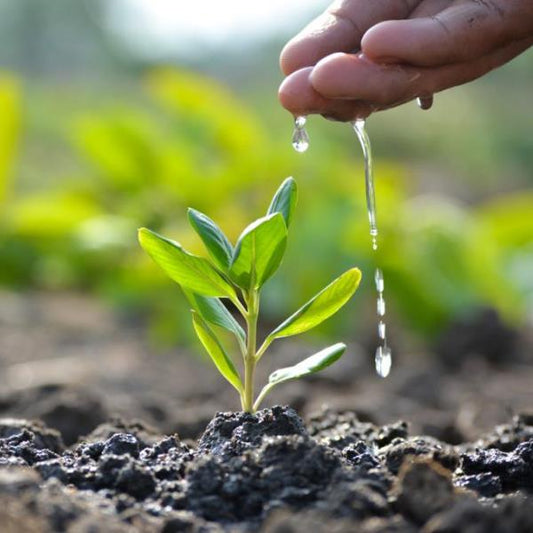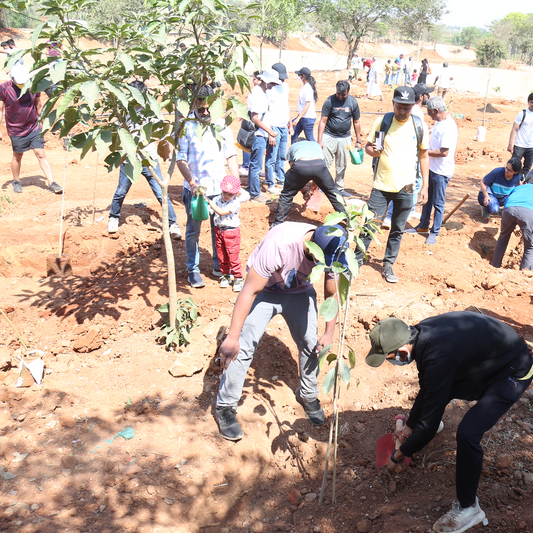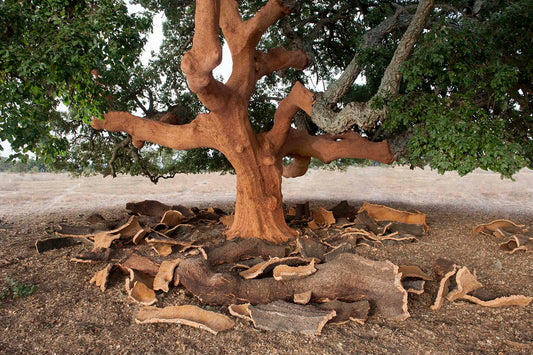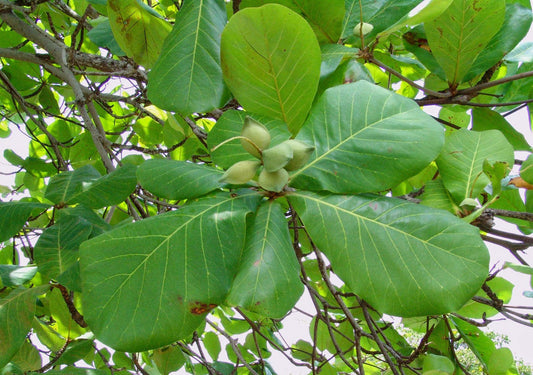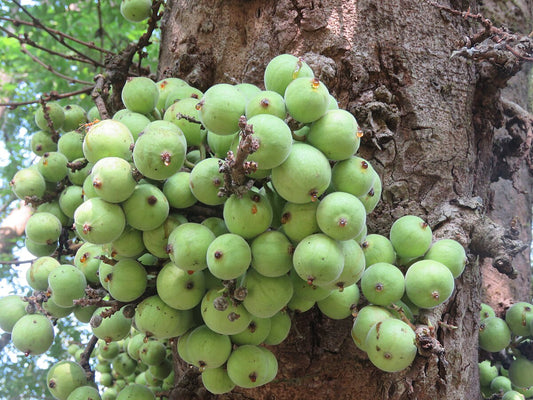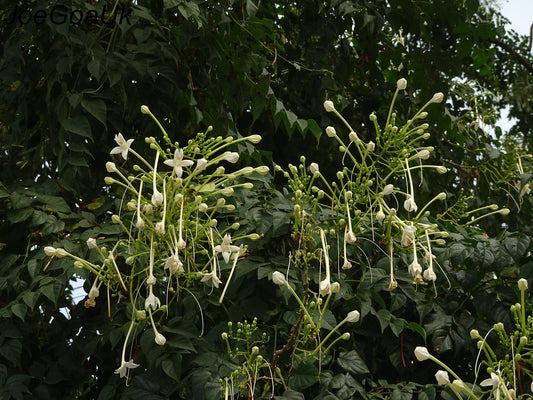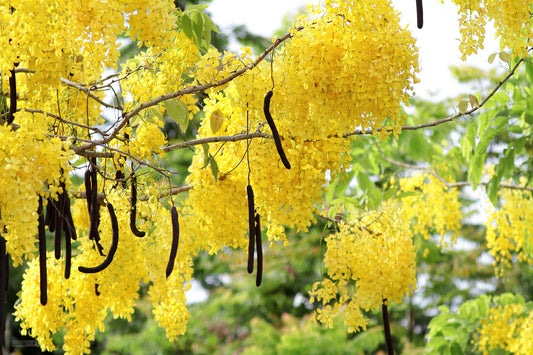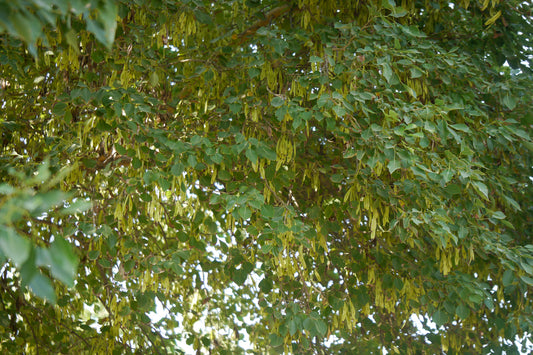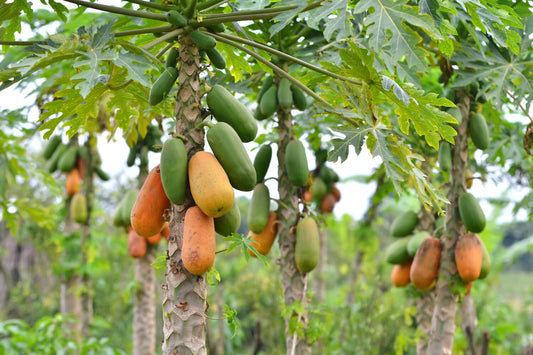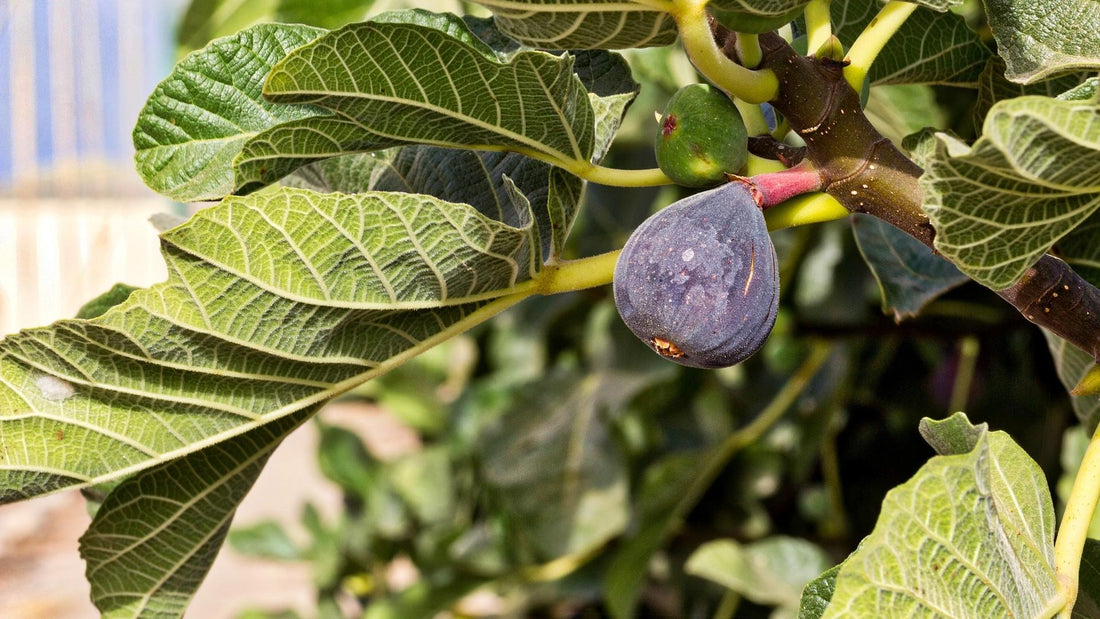

Enter the captivating realm of the Fig tree, celebrated for its delectable fruits and rich cultural symbolism. From its intriguing taxonomy to its culinary delights, the Fig tree has seamlessly integrated itself into human civilization. Join us as we unravel its taxonomy, historical and cultural sig Read more
Trending
Trees for Corporates
Fig Tree
Enter the captivating realm of the Fig tree, celebrated for its delectable fruits and rich cultural symbolism. From its intriguing taxonomy to its culinary delights, the Fig tree has seamlessly integrated itself into human civilization.
Join us as we unravel its taxonomy, historical and cultural significance, medicinal properties, agricultural applications, scientific research, environmental impact, economic importance, conservation status, and future prospects.
Fun Fact: Did you know that figs are not actually fruits but inverted flowers?
Taxonomy and Botanical Features: With its distinctive syconium structure, housing numerous tiny flowers within, the Fig tree belongs to the genus Ficus. Encompassing over 800 species, these trees vary from towering giants to diminutive shrubs.
Historical and Cultural Significance: Revered as a symbol of abundance and fertility in ancient Mediterranean cultures, the Fig tree holds profound cultural significance. Its presence in religious texts and mythology, such as the Bible and the Quran, underscores its enduring relevance.
Medicinal Properties and Traditional Uses: Throughout history, various parts of the Fig tree, including its leaves, fruits, and latex, have been utilized in traditional medicine to alleviate ailments such as diabetes, skin conditions, and digestive issues, offering holistic wellness solutions.
Agricultural Applications: Versatile figs are enjoyed fresh, dried, or processed into jams, syrups, and baked goods, enriching culinary creations with their unique flavor profiles and nutritional richness.
Modern Scientific Research: Recent studies shed light on the nutritional benefits and ecological importance of figs, highlighting their role in supporting pollinators and wildlife, crucial for maintaining ecosystem balance.
Environmental Impact and Sustainability: Integral to diverse ecosystems, Fig trees stabilize soil with their deep roots, prevent erosion, and offer vital food and shelter for countless species, underscoring their ecological significance.
Economic Importance: Beyond culinary use, fig cultivation fuels agriculture, food processing, and international trade, fostering livelihoods and bolstering local economies with its economic value.
Conservation Status and Future Prospects: While some fig tree species face threats like habitat loss and climate change, concerted conservation efforts are underway, emphasizing sustainable farming and habitat preservation to ensure their long-term survival.
Conclusion: The Fig tree stands as a testament to the profound connection between humanity and nature, offering sustenance, inspiration, and cultural richness across civilizations. Let us honor and safeguard the legacy of the Fig tree, ensuring its enduring presence for generations to come. Embrace the Fig tree, a true jewel of the natural world.
You may also like
Corporate Plantations
Fig Tree Facts
Explore intriguing facts about the Fig tree, known for its delicious fruit, ornamental foliage, and cultural significance. Learn about its botanical name (Ficus carica), native range, and historical cultivation in Mediterranean and subtropical regions.
Fig Tree Care
Discover essential care tips for growing and maintaining Fig trees in diverse climates and soil types. From selecting suitable planting locations to providing proper irrigation and pruning, learn how to nurture these iconic trees for optimal fruit production and health.
Fig Tree Fruit Production
Learn about the factors influencing Fig tree fruit production and the seasonal ripening of figs. From pollination and weather conditions to tree age and variety, various factors affect the quantity and quality of fig crops, which are prized for their sweetness and versatility in culinary applications.
Fig Tree Culinary Uses
Explore the culinary uses of figs in various cuisines around the world. From fresh figs eaten as snacks and dessert toppings to dried figs used in baking, jams, and confections, figs are valued for their unique flavor and nutritional benefits.
Fig Tree Medicinal Uses
Discover the medicinal properties of Fig leaves, sap, and fruit in traditional herbal medicine. From treating digestive disorders and respiratory ailments to promoting skin health and wound healing, figs have been valued for their therapeutic benefits for centuries.
Fig Tree Symbolism
Delve into the cultural symbolism of the Fig tree in mythology, religion, and folklore. Revered for its association with fertility, abundance, and protection, the Fig tree symbolizes prosperity, renewal, and spiritual enlightenment in various cultural traditions.
Fig Tree Habitat
Learn about the natural habitat of Fig trees, including Mediterranean climates, subtropical forests, and coastal regions. From well-drained, fertile soils to sunny, sheltered locations, Fig trees thrive in diverse ecosystems, providing habitat and sustenance for wildlife.
Fig Tree Growth Rate
Gain insights into the growth rate and development of Fig trees under optimal growing conditions. With moderate growth rates, Fig trees can attain mature heights and spread within a few years, producing abundant fruit and contributing to landscape aesthetics.
Fig Tree Pruning
Learn about the importance of pruning Fig trees to remove deadwood, promote airflow, and enhance fruit production. Explore pruning techniques, timing, and safety precautions for maintaining productive and aesthetically pleasing Fig orchards.
Fig Tree Flowering Season
Discover the flowering season of Fig trees and the unique structure of fig inflorescences. From tiny, hidden flowers within the fig receptacle to symbiotic pollination by specialized wasps, fig trees exhibit fascinating reproductive biology and ecological interactions.
Fig Tree Leaf Characteristics
Explore the distinctive characteristics of Fig leaves, including their lobed shape, velvety texture, and vibrant green color. With adaptations for maximizing photosynthesis and minimizing water loss, Fig leaves are well-suited to Mediterranean climates and seasonal changes.
Fig Tree Root System
Learn about the root system of Fig trees and its role in anchoring the tree, accessing water and nutrients, and stabilizing soil. With deep taproots and spreading lateral roots, Fig trees contribute to soil stability, erosion control, and water retention in diverse ecosystems.
Fig Tree Wildlife Habitat
Discover the importance of Fig trees as habitat and food sources for wildlife in Mediterranean and subtropical regions. From birds and bats to insects and mammals, Fig trees support a diverse array of species, contributing to biodiversity conservation and ecological balance.
Fig Tree Soil Requirements
Learn about the soil requirements for growing Fig trees and optimizing their health and fruit production. From well-drained, loamy soils to sandy or rocky substrates with good aeration and moisture retention, Fig trees exhibit adaptability to various soil types.
Fig Tree Pest and Disease Management
Discover common pests and diseases that affect Fig trees and strategies for prevention and control. From fungal pathogens and nematodes to fig beetles and birds, proactive management practices can help minimize the impact of pests and diseases on tree health and fruit quality.
Fig Tree Root Pruning
Learn about root pruning techniques for Fig trees to address root-related issues and promote tree health and stability. From improving soil structure and drainage to preventing root girdling and overcrowding, root pruning can enhance the vigor and longevity of Fig trees.
Fig Tree Indigenous Knowledge
Explore traditional knowledge and practices associated with Fig trees in Mediterranean cultures and rural communities. From folklore and culinary traditions to agroforestry systems and sustainable land management, Fig trees hold cultural significance and ecological value in various human societies.
Fig Tree Ethnobotany
Learn about the ethnobotanical uses of Fig trees in food, medicine, and crafts. From harvesting fresh figs for culinary delights to using fig leaves for wrapping and flavoring foods, Fig trees have provided essential resources and cultural heritage for millennia.
Fig Tree Cultivars
Fig Tree Cultivars
FAQ
What is a Fig tree?
The Fig tree, scientifically known as Ficus carica, is a deciduous tree or shrub native to the Mediterranean region and western Asia. Renowned for its sweet, pear-shaped fruits called figs, Fig trees hold cultural, culinary, and horticultural significance worldwide.
Where are Fig trees commonly found?
Fig trees are commonly found in Mediterranean climates, including regions of southern Europe, North Africa, the Middle East, and western Asia. They thrive in warm, sunny locations with well-drained soil and are often cultivated for their delicious fruits and ornamental value.
What are the characteristics of Fig trees?
Fig trees are characterized by their large, lobed leaves, gnarled branches, and unique fruit structures called syconia, which contain numerous tiny flowers inside. They produce figs that vary in color from green to purple or black, depending on the cultivar, and have a sweet, honey-like flavor when ripe.
How tall do Fig trees grow?
Fig trees can vary widely in size, ranging from small shrubs to large trees, depending on the cultivar and growing conditions. They typically reach heights of 3-10 meters (10-33 feet) tall, with a spreading canopy and dense foliage.
What is the scientific name of the Fig tree?
The scientific name of the Fig tree is Ficus carica, belonging to the family Moraceae. The genus name "Ficus" is derived from the Latin word for fig, while the species epithet "carica" refers to its origin in Caria, an ancient region of Anatolia (modern-day Turkey).
When do Fig trees bear fruit?
Fig trees typically bear fruit in summer or early autumn, depending on the cultivar and local climate conditions. The fruiting period may vary, with some varieties producing two crops per year: a breba crop in spring and a main crop in summer or autumn.
How to care for Fig trees?
To care for Fig trees, plant them in well-drained soil in a sunny location with protection from strong winds. Provide regular watering, especially during the growing season, and mulch around the base of the tree to retain moisture and suppress weeds. Prune as needed to remove dead or diseased branches and promote fruit production.
What are the benefits of planting Fig trees?
Planting Fig trees offers several benefits, including providing delicious, nutritious fruits for fresh consumption, drying, or cooking, enhancing landscape aesthetics with their attractive foliage and gnarled branches, and attracting wildlife such as birds and pollinators.
Are Fig trees suitable for urban environments?
Fig trees are well-suited for urban environments, where they provide shade, food, and beauty to city landscapes. They can be planted in gardens, parks, and green spaces, where their low maintenance requirements and ornamental value are appreciated.
How to propagate Fig trees?
Fig trees can be propagated from seeds, cuttings, or air layering. Collect ripe figs from mature trees and extract the seeds for planting. Alternatively, take hardwood cuttings from healthy, mature trees or encourage root formation on a branch using air layering techniques.
What are the common pests and diseases affecting Fig trees?
Common pests affecting Fig trees include fig beetles, fig borers, and fig mites, while diseases such as fig rust, fig mosaic virus, and fig canker can also occur. Proper monitoring and integrated pest management practices can help prevent and manage pest and disease problems.
Can Fig trees tolerate drought?
Fig trees have good drought tolerance once established but benefit from regular watering during dry periods, especially when fruiting. Mulching around the base of the tree helps retain soil moisture and regulate soil temperature, promoting healthy growth and fruit production.
How long does it take for a Fig tree to mature?
It typically takes 3-5 years for a Fig tree to reach maturity and start producing significant fruit yields. However, some varieties may bear fruit earlier, while others may take longer depending on growing conditions, cultivar characteristics, and management practices.
Are Fig trees deciduous?
Yes, Fig trees are deciduous, meaning they shed their leaves seasonally in response to environmental cues such as changes in temperature and daylight. The leaves turn yellow or reddish before falling off, creating a colorful spectacle in the landscape.
Can Fig trees be grown in pots?
Fig trees are well-suited for container cultivation, especially dwarf or patio varieties, which can thrive in pots on balconies, patios, or terraces. Use a well-draining potting mix, provide regular watering and fertilization.
Most Popular
Connect with us
-
👥 Corporates
If you are looking for:
- 🌲 Tree Plantation Events
- 📊 CSR Projects
📧 corporate@growbilliontrees.com
📞 +91 9699723523
💬 WhatsApp (Only): +91 9370599291
🕒 Mon - Sat | 10am - 7pm IST
-
🧩 Tree Plantation NGOs
If you are looking for:
- 💰 Financial Assistance
- 🤝 Operational Support
📧 support@growbilliontrees.com
📞 +91 9699723523
💬 WhatsApp (Only): +91 9370599291
🕒 Mon - Sat | 10am - 7pm IST
-
🌼 Individuals
If you are looking for:
- 👥 Group Tree Plantation Drive
- 🌳 Bulk Tree Plantation
📞 +91 9699723523
💬 WhatsApp (Only): +91 9370599291
🕒 Mon - Sat | 10am - 7pm IST



